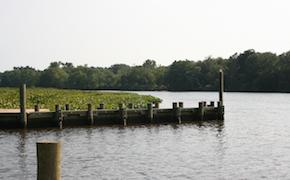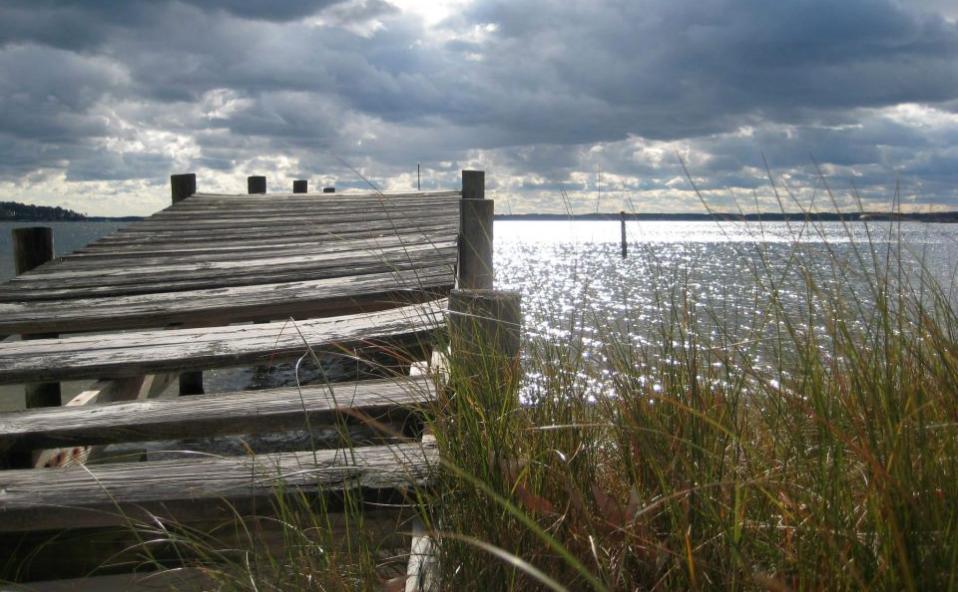
CBF Oyster planting vessel Patricia Campbell on its way to seed oysters in the Tred Avon River.
The Chesapeake Bay Foundation (CBF) continued its long-term push to restore oyster reefs in the Chesapeake Bay by adding more than 14 million oysters in Maryland waters during 2020’s pandemic-affected season.
More than 10 million of the oysters were added to the Tred Avon River on the Eastern Shore, where CBF is working under a grant from the National Oceanic and Atmospheric Administration (NOAA) to restore oyster reefs at the tributary scale along with other state and federal partners. This effort contributes to the Chesapeake Bay Agreement goal of restoring oyster reefs in 10 tributaries by 2025.
Despite the pandemic limiting CBF staff’s ability to connect with volunteers, CBF’s cadre of oyster gardeners contributed 500,000 adult oysters to the 2020 tally. These oysters were added to Maryland’s portion of the Bay from as far south as the Virginia border to the Baltimore area in the north. The work helps engage citizens with limited access to the Bay and exposes them to this iconic reef-building species they may only be familiar with from eating.
Volunteers also helped CBF collect more than 1,200 bushels of oyster shells, which will be recycled, re-set with oyster larvae and put back into the Bay to grow. In the Bay, oysters naturally produce larvae that attaches to existing oyster shells and grows into larger oysters, which helps build reefs.

CBF Oyster Restoration Manager Karl Willey in front of oysters that were later added to the Tred Avon River – Summer 2020
The oyster restoration figures were down from CBF’s annual average of adding about 25 million oysters to the Bay. This was mostly due to limitations on restoration activities to ensure safety during the pandemic. CBF limited the number of staff working closely on boats as well as how many volunteers could gather for oyster gardening events.
“As soon as we became aware of the pandemic in early March of last year, we took immediate action to change our oyster restoration operations to ensure the safety of staff and volunteers,” said Doug Myers, CBF’s Senior Maryland Scientist. “What we didn’t do is halt the program. Instead, we worked within safety guidelines and continued planting millions of water-filtering oysters in the Bay. We’re so thankful to our dozens of volunteers who were able to assist our efforts during these trying times by helping to pick up and clean recycled shells.”
Chesapeake Oyster Alliance and Large-Scale Restoration Efforts
CBF’s effort coincided with work by other groups that are also adding more oysters to the Bay. The Chesapeake Oyster Alliance, a coalition of oyster-related businesses, academic institutions and environmental organizations, has now added more than 2 billion oysters to the Bay as it continues its march toward its goal to add 10 billion oysters to the Bay by 2025.

CBF Oyster Restoration Specialist Patrick Beall stands next to one of four trucks used to transport oysters raised by volunteers for planting in Herring Bay in fall 2020. Credit – AJ Metcalf
In 2020, the Alliance and CBF joined forces to help oyster aquaculture operators sell farm-raised oysters directly to consumers. Oyster aquaculture businesses were hit particularly hard by reduced restaurant demand for oysters during the pandemic.
“We were able to help four oyster farmers sell more than 18,000 oysters during oyster pop-up sales hosted throughout Maryland during the summer and fall,” said Tanner Council, Chesapeake Oyster Alliance Manager. “Oyster farming has been one of the great seafood economic success stories during the past decade, with the industry growing by about 24 percent per year in Maryland from 2012 to 2018. We wanted to help any way we could to ensure businesses survive the reduced demand for oysters caused by restaurant closures during the pandemic.”
This past year, CBF also celebrated the completion of oyster restoration work in the Little Choptank River on Maryland’s Eastern Shore, where 358 acres of Bay bottom have now been seeded with 2 billion spat-on-shell oysters. CBF added about 66 million oysters to the Little Choptank during the restoration work, which began in 2015.
The large-scale restoration work is targeted to meet the Chesapeake Bay Watershed Agreement’s goal of restoring oyster populations in at least 10 Bay tributaries by 2025. So far, those efforts have been completed in Maryland’s Harris Creek and Virginia’s Lafayette River and the Eastern Branch of the Elizabeth River, as well as the Little Choptank.
Oyster Innovation
CBF has been innovating to respond to oysters’ ongoing challenges. In 2020, staff continued monitoring a 700-foot oyster reef ball living shoreline installed in the South River in 2019 in partnership with the Arundel Rivers Federation. The concrete reef balls placed near an eroding shoreline were seeded with spat, or juvenile oysters. Some of those oysters have since grown much larger. CBF is reviewing the project to see if reef balls seeded with oysters could be used in living shorelines elsewhere along the Bay to provide habitat, filter water, and reduce shoreline erosion. By growing vertically, this nearshore reef could continue to provide shore protection better than bulkheads and other shoreline armoring because the growth can keep pace with sea level rise.
CBF has also been working with engineering firm Northrop Grumman to develop ways to more easily monitor oyster reefs below the often murky water of the Bay. In 2021, CBF and Northrop Grumman plan to deploy new SONAR and acoustic listening devices to help better understand how oysters are faring in the Bay and identify new target reefs for restoration.
Oysters are a keystone species in the Chesapeake Bay. An adult oyster can filter up to 50 gallons of water per day, their reefs provide habitat for fish, crabs, and other marine life, and oysters are an important part of the region’s seafood economy. For these reasons, CBF has prioritized the protection and restoration of the Bay’s oyster reefs.
More information about CBF’s oyster-related work can be found in the 2020 Maryland Oyster Annual Report.



